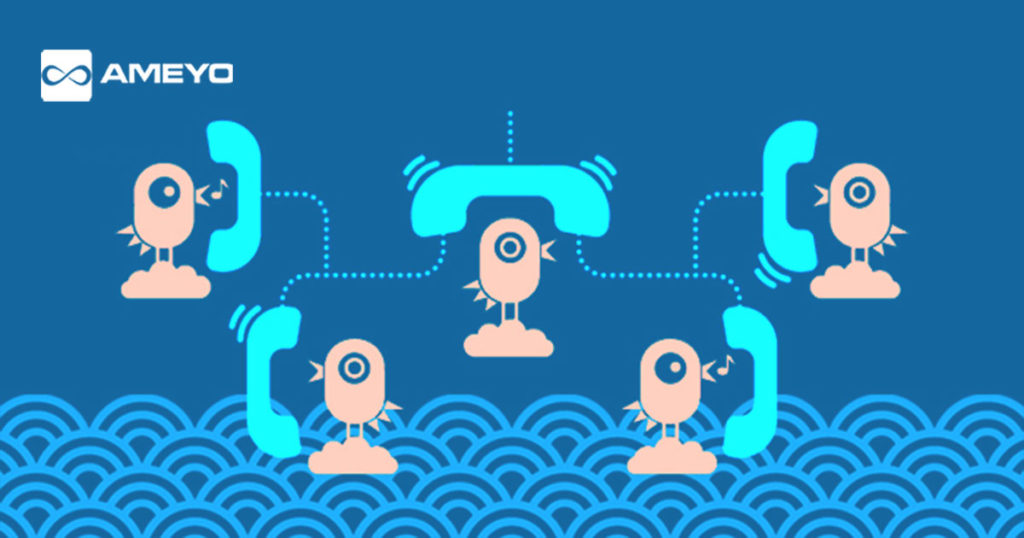An Automatic Call Distributor or ACD is a device that is used to distribute the calls coming into a contact center to a group of agents with specific skills. The distribution is based on the telephone number of the customer, the customer’s selection, the time or the chosen incoming line. Nowadays, an ACD is a part of CTI (Computer Telephony Integration) system.
Based on a set of instructions, the ACD system adopts a rule-based routing strategy to handle inbound calls and direct it appropriately. The basic rule is to get a customer to an agent as soon as possible. However, most of the contact centers nowadays add multiple variables for the convenience of customers. For instance, to get a high-priority customer/call to a specific agent in no time.
CTI matches the incoming phone calls with the appropriate information/data on an agent’s computer through screen pop. This helps to improve the efficiency of the agents. When they have all the information about a particular customer in front of them even before the call starts, it will help them to provide a better customer service.
Interflow in ACD routing
Interflow helps to reduce the wait time of the callers in a busy queue. You can program the interflow for a queue, you may set a time as to how long a call can sit in the queue, and then move it once that time has expired. In interflow, the calls are usually moved to another site that is not a part of that particular ACD environment, such as a voice mail system. Basically what happens is that the system, when the pre-set wait-time is reached, will move the calls between queues. The calls will automatically be redirected. It happens without any interference from the user. Interflow can be load-based or time-based. Load-based in the sense you may set a specific number of calls for a particular queue. For instance, you may program the queue for 10 calls. Once that much calls are waiting in the queue, the system will then automatically start redirecting calls to another queue.
When a customer is redirected to a voicemail, he/she can leave a voicemail, and the agents can then look into it and then get back to them with a resolution. This means that the customer does not have to wait in the queue for a long time. This will also prevent the customer from hanging up the phone out of frustration. For the contact center, this means less number of abandoned calls.
Intraflow in ACD routing
The calls are routed from one agent group to another within the same ACD environment, in intraflow. Unlike interflow, here the calls will not go out of that particular ACD environment. The interflow for a queue can be configured in the same way the interflow can be programmed. You may set it based on time or the number of calls landing in a particular queue. The advantage is that the system will find an agent group that is not busy, and will direct the customers to that group. This way the customer calls will be answered quickly. When the calls are evenly distributed in the same environment, the waiting time will become less. This will also help to reduce the number of abandoned calls. Also, less wait time means, the customers will not be in a bad mood after reaching an agent. The agent will be able to resolve the customer’s issue as soon as possible with the cooperation of the customer.
Overflow in ACD routing
In overflow as well, the calls flow between agent groups within the same ACD environment. In overflow, the system can have one primary group with agents having specific skills, and may have up to 3 overflow groups. If the calls overflow in the primary group queue, the system will maintain their position in the queue and redirect the calls to the other groups. You can configure the time or set the maximum number of calls that could wait in the queue. Once the time expires or the number of calls reaches the maximum limit, the system will automatically divert the calls to the other groups. Overflow helps to balance the workload optimally and thus minimize any delay for the callers. This will ensure that the service level goals are achieved at the end of the day.
The ACD system helps to manage the calls coming into a contact center. Interflow, intraflow, and overflow helps to ensure that the wait time for the customers is minimal, and thus the call center metrics are met at the end of the day. The best thing about the ACD system is that it can be configured based on any needs. For example, during the holidays or when a new product is launched, the calls coming into a contact center will be high. Programming the system accordingly will help to manage the call flow.
